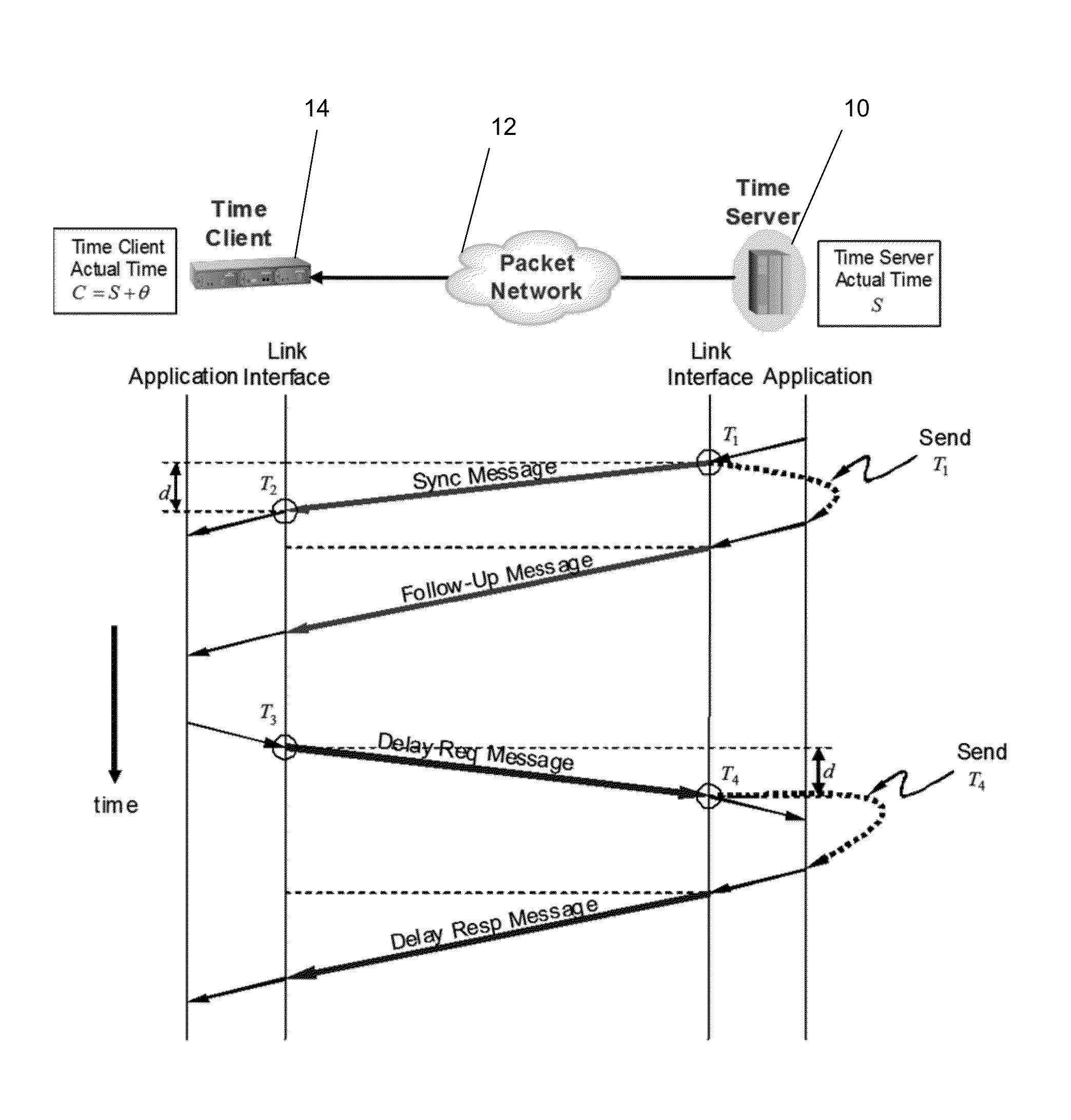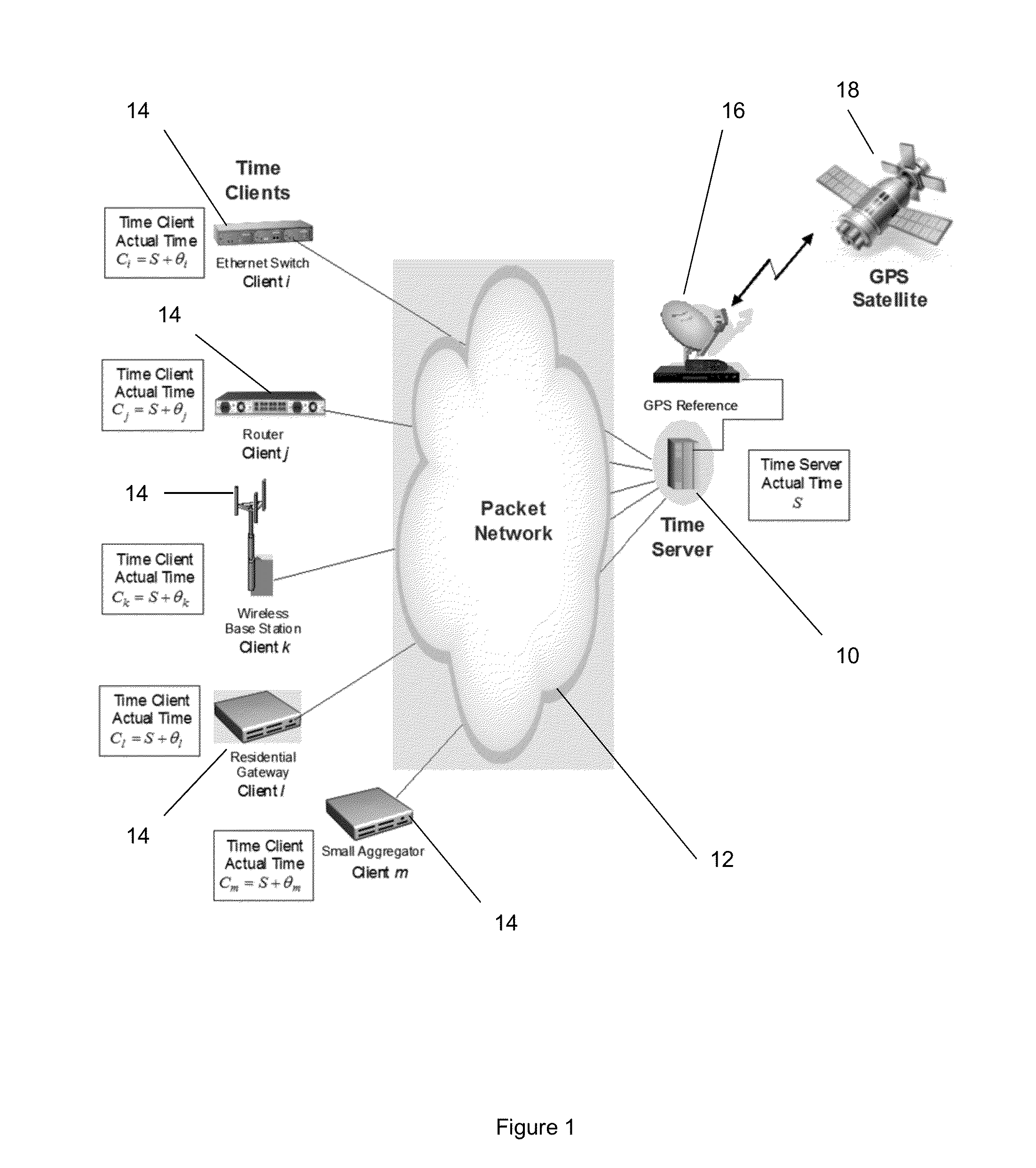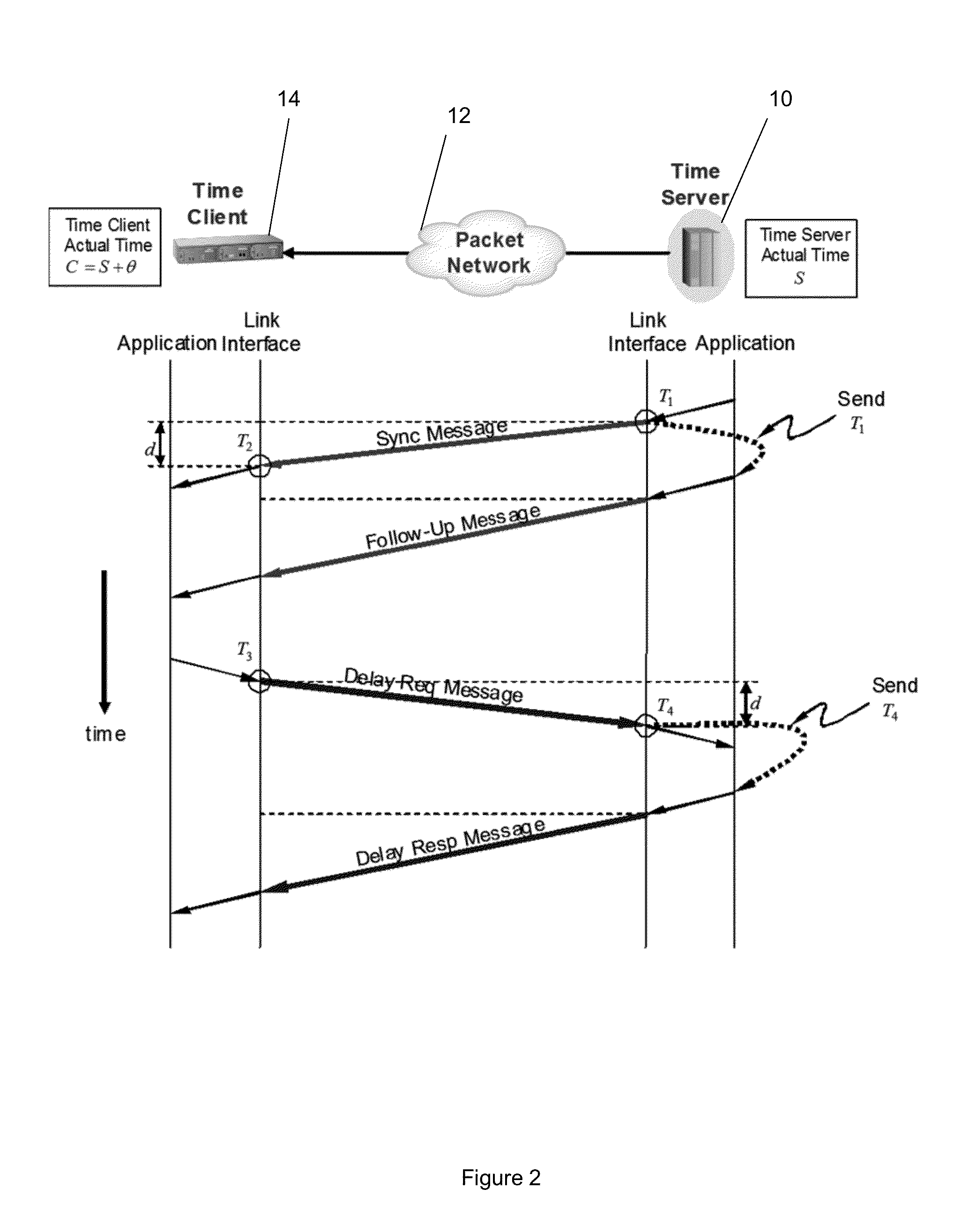Methods and devices for clock synchronization
- Summary
- Abstract
- Description
- Claims
- Application Information
AI Technical Summary
Benefits of technology
Problems solved by technology
Method used
Image
Examples
Embodiment Construction
[0079]Accordingly, at its broadest, a first aspect of the present invention provides a method of synchronizing a local clock to a master clock by estimating the skew and offset of the local clock compared to the master clock and adjusting the output of the local clock accordingly.
[0080]A first aspect of the present invention preferably provides a method of synchronizing a local clock in a time client to a master clock in a time server, the method including the steps of: transmitting messages carrying timestamps from the time server and from the time client; receiving the messages from the time server at the time client and extracting timestamps from said messages; receiving the messages from the time client at the time server and extracting timestamps from said messages; estimating the skew and offset of the local clock compared to the master clock; and adjusting the output of the local clock using said estimated skew and offset, wherein the step of estimating the skew and offset in...
PUM
 Login to View More
Login to View More Abstract
Description
Claims
Application Information
 Login to View More
Login to View More - R&D
- Intellectual Property
- Life Sciences
- Materials
- Tech Scout
- Unparalleled Data Quality
- Higher Quality Content
- 60% Fewer Hallucinations
Browse by: Latest US Patents, China's latest patents, Technical Efficacy Thesaurus, Application Domain, Technology Topic, Popular Technical Reports.
© 2025 PatSnap. All rights reserved.Legal|Privacy policy|Modern Slavery Act Transparency Statement|Sitemap|About US| Contact US: help@patsnap.com



